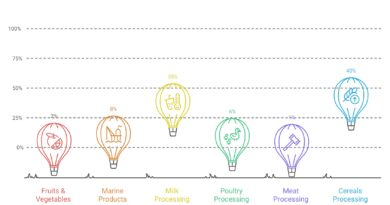Greenfield project
A Greenfield project refers to a venture that is initiated from scratch, without any constraints imposed by prior work or existing infrastructure. The term originates from the construction industry, where it describes development on undeveloped land. Here are some key aspects of Greenfield projects:
Contents
Greenfield Project:
A project started without any limitations from previous projects, allowing for complete freedom in design and execution. This can apply to various industries, including construction, software development, and manufacturing.
Characteristics
– Clean Slate: These projects begin with no pre-existing structures or conditions, enabling innovative design and planning.
– Flexibility: There is greater creative freedom compared to Brownfield projects, which must navigate existing constraints.
– Higher Upfront Costs: Building from the ground up often involves significant initial investment for land acquisition and infrastructure development.
– Environmental Impact: While they may disrupt untouched land, Greenfield projects can also incorporate modern, eco-friendly technologies from the outset.
Examples
– Construction of new residential complexes or manufacturing plants.
– Development of new software applications or systems.
– Establishment of new airports or power plants.
In contrast, Brownfield projects involve upgrading or repurposing existing sites and must contend with pre-existing conditions and potential regulatory challenges.
Greenfield projects in India:
India has seen significant development in Greenfield projects across various sectors, including airports, ports, and urban infrastructure. Here are some notable examples:
Greenfield Airports
1. Noida International Airport: Located in Jewar, this airport is designed to ease congestion at Delhi’s Indira Gandhi International Airport and is expected to become one of the largest in India.
2. Kushinagar International Airport: This Greenfield airport in Uttar Pradesh aims to boost tourism and connectivity, especially for Buddhist pilgrimage sites.
3. Kalaburagi Airport: Situated in Karnataka, this airport is part of efforts to enhance regional connectivity.
4. Sindhudurg Airport: Located in Maharashtra, this project is intended to promote tourism in the Konkan region.
5. Mopa Airport: Aiming to serve as Goa’s second international airport, it is expected to significantly enhance air traffic capacity.
Greenfield Ports
India is also investing heavily in Greenfield port projects to improve maritime infrastructure:
– Vadhavan Port (Maharashtra): A major upcoming port project aimed at increasing cargo handling capacity.
– Ramayapatnam Port (Andhra Pradesh): Under construction with a planned capacity of 34.02 million tonnes per annum (mtpa).
– Machilipatnam Port (Andhra Pradesh): Another significant project with a capacity of 35 mtpa.
Urban Development
– Dholera Smart City: Positioned along the Delhi-Mumbai Industrial Corridor, Dholera is being developed as India’s first smart city with integrated infrastructure and sustainability features.
These projects reflect India’s commitment to enhancing its infrastructure through Greenfield initiatives, which provide opportunities for modern design and technology integration while addressing growing demands in transportation and urban living.
Source: Business Standard
Q.11 Consider the airports:
1. Donya Polo Airport
2. Kushinagar International Airport
3. Vijayawada International Airport
In the recent past, which of the above have been constructed as Greenfield projects?
(a) 1 and 2 only
(b) 2 and 3 only
(c) 1 and 3 only
(d) 1, 2 and 3
Brownfield projects in India:
Brownfield projects in India refer to the redevelopment or renovation of existing structures or sites, often aimed at revitalizing urban areas and improving infrastructure. Here are some significant examples and trends regarding Brownfield projects in India:
Key Examples of Brownfield Projects
1. Essar’s Coal Bed Methane Project: Essar Oil and Gas Exploration and Production Ltd is investing ₹2,000 crore in its coal bed methane project in Raniganj, West Bengal. This involves drilling additional wells to enhance production capabilities[2].
2. Mahindra Lifespace and Actis Joint Venture: This partnership focuses on developing industrial and logistics parks, starting with a 70-acre project in Chennai. The initiative includes both Greenfield and Brownfield sites, highlighting the importance of revitalizing existing areas for new developments[2].
3. Urban Redevelopment Initiatives: The Indian government is emphasizing brownfield redevelopment as part of its urban development strategy. This includes financial support for projects aimed at improving water and sanitation infrastructure, housing under the PM Awas Yojana, and enhancing public transport systems[2].
4. Adani Group’s Expansion: Adani Group’s Ambuja Cements is focusing on brownfield expansion through acquisitions, including a recent acquisition of Penna Cement to increase its production capacity significantly[2].
5. Healthcare Sector Developments: Various hospitals in India are undergoing brownfield expansions to enhance their capacities and services. For example, Patna Medical College is planning to increase its capacity from 1,750 beds to 5,462 beds through redevelopment efforts[3].
Advantages of Brownfield Projects
– Urban Renewal: Brownfield projects can revitalize neglected or underutilized areas, transforming them into productive spaces.
– Cost Efficiency: Redeveloping existing sites can be more cost-effective than starting from scratch, especially when considering land acquisition costs.
– Sustainability: These projects often incorporate sustainable practices by reusing existing structures and minimizing environmental impact.
Challenges:
– Remediation Needs: Many brownfield sites require extensive remediation to address contamination or structural issues before redevelopment can begin.
– Regulatory Hurdles: Navigating regulations related to existing structures can complicate the development process.
India’s focus on brownfield projects reflects a strategic approach to urban development, balancing the need for new infrastructure with the benefits of revitalizing existing sites.
Discover more from Simplified UPSC
Subscribe to get the latest posts sent to your email.


